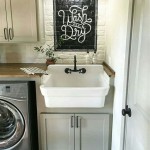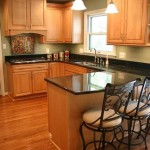Hinges For Lift Up Cabinet Doors: A Comprehensive Guide
Lift-up cabinet doors are a design choice that presents both aesthetic and functional advantages. They offer a modern look, maximize space utilization, and enhance accessibility within kitchens, offices, and various other settings. The smooth operation and reliable support of these doors rely heavily on the selection of appropriate hinges. This article provides a detailed exploration of the various types of hinges suitable for lift-up cabinet doors, outlining their features, applications, and crucial considerations for selection.
The effectiveness of lift-up cabinet doors hinges is judged not only by their ability to hold the door in the open position but also by their smooth and controlled movement, durability, and ease of installation. Different hinge types and features cater to different door weights, sizes, and desired opening angles. Understanding the nuances of each type ensures that the selected hinges meet the specific requirements of the cabinet design and usage.
Types of Hinges for Lift-Up Cabinet Doors
The market offers a variety of hinges specifically designed for lift-up cabinet doors. Each type leverages a different mechanism to provide support and controlled movement. The most common types include gas spring hinges, flap stay hinges, and concealed hinges with specialized lift-assist mechanisms.
Gas Spring Hinges
Gas spring hinges, also known as gas struts or gas pistons, utilize compressed gas to provide controlled lifting and smooth closing of cabinet doors. They consist of a cylinder containing compressed gas and a piston rod. As the door is opened, the gas within the cylinder compresses, creating resistance that slows the upward movement. This controlled resistance prevents the door from slamming open and allows it to be held securely in any position. Similarly, when closing the door, the gas spring dampens the downward motion, ensuring a soft and silent closure.
The strength of the gas spring is measured in Newtons (N), and selection of the appropriate strength is crucial. If the spring is too weak, it will not be able to support the door's weight, causing it to fall closed. Conversely, if the spring is too strong, it will require excessive force to close the door. Accurate calculation of the door's weight and dimensions is necessary to determine the optimal gas spring strength. Manufacturers typically provide charts and guidelines to assist in this calculation.
Gas spring hinges are widely used in kitchen cabinets, above-refrigerator cabinets, and other applications where easy access and controlled movement are desired. They are particularly suitable for heavier doors and offer a sleek, modern aesthetic.
Flap Stay Hinges
Flap stay hinges, unlike gas springs, generally employ mechanical friction or a leverage system to control the movement of the door. They are typically simpler in design and can be adjusted to provide varying degrees of resistance. Flap stays often feature a ratcheting mechanism or a friction disc that allows the door to be held in multiple open positions. Some advanced models incorporate hydraulic dampers for smoother and quieter operation.
These hinges are well-suited for lighter doors and applications where a specific opening angle is desired. They are often used in cabinets that serve as desks or work surfaces, where the door needs to be held open at a specific angle for ease of use. Flap stay hinges are typically more compact than gas spring hinges and can be easily integrated into various cabinet designs.
The adjustability of flap stay hinges is a key advantage. Users can fine-tune the resistance to match the weight and balance of the door, ensuring optimal performance. Some models also allow for adjustment of the opening angle, providing greater flexibility in cabinet design and functionality.
Concealed Hinges with Lift-Assist Mechanisms
Concealed hinges, as the name suggests, are designed to be hidden from view when the cabinet door is closed, providing a clean and streamlined appearance. When used for lift-up cabinet doors, concealed hinges are often paired with specialized lift-assist mechanisms. These mechanisms can be either gas springs, mechanical springs, or lever systems integrated into the hinge body.
The combination of concealed hinges and lift-assist mechanisms offers a blend of aesthetics and functionality. The concealed design eliminates visible hardware, while the lift-assist mechanism provides smooth and controlled movement. This type of hinge is commonly found in high-end kitchens and furniture where a premium look and feel are desired.
Installation of concealed hinges with lift-assist mechanisms can be more complex than other types, often requiring precise routing and alignment. However, the resulting aesthetic and functional benefits make them a popular choice for discerning customers.
Factors to Consider When Selecting Hinges
Choosing the right hinges for lift-up cabinet doors requires careful consideration of several factors. These include the door's weight and dimensions, the desired opening angle, the aesthetic requirements, and the overall budget. A thorough assessment of these factors will ensure that the selected hinges provide optimal performance and longevity.
Door Weight and Dimensions
The weight and dimensions of the cabinet door are critical parameters in selecting appropriate hinges. Heavier doors require stronger hinges with greater load-bearing capacity. Manufacturers specify the maximum weight and dimensions that each hinge model can support, and it is essential to adhere to these guidelines to prevent premature failure or malfunction.
For gas spring hinges, it is crucial to calculate the correct Newton rating based on the door's weight and height. Overloading a gas spring can lead to reduced performance and a shorter lifespan. Underloading a gas spring can result in excessive force required to close the door.
For flap stay hinges and concealed hinges with lift-assist mechanisms, the weight capacity is equally important. Exceeding the specified weight limit can damage the hinge and compromise its ability to hold the door in the open position safely.
Desired Opening Angle
The desired opening angle of the cabinet door is another important consideration. Different hinge types offer varying degrees of opening. Some hinges allow the door to open fully to 90 degrees or more, while others are designed for smaller opening angles. The choice depends on the specific application and the amount of clearance available around the cabinet.
Gas spring hinges typically offer a wide range of opening angles, allowing the door to be positioned at any point within its range of motion. Flap stay hinges may have fixed opening angles or adjustable settings that allow for pre-determined positions. Concealed hinges with lift-assist mechanisms can also offer a variety of opening angles, depending on the design of the lift mechanism.
Consider the ergonomics of the cabinet design when selecting the opening angle. The door should open to a comfortable position that allows easy access to the contents of the cabinet without obstructing the user's movement.
Aesthetic Requirements
The aesthetic requirements of the cabinet design play a significant role in the selection of hinges. Concealed hinges offer the cleanest and most streamlined look, as they are hidden from view when the door is closed. Gas spring hinges and flap stay hinges are typically visible, but they are available in various finishes and styles to complement the overall design.
Consider the finish and color of the hinges in relation to the cabinet doors and surrounding hardware. Matching the hinges to the door hardware or selecting a contrasting finish can enhance the overall aesthetic appeal of the cabinet.
The choice between concealed and visible hinges often depends on the desired level of minimalism and the overall design theme. Concealed hinges are ideal for modern and contemporary designs, while visible hinges can add a touch of character to more traditional styles.
Installation and Maintenance
Proper installation and regular maintenance are crucial for ensuring the longevity and optimal performance of lift-up cabinet door hinges. Improper installation can lead to premature failure, while neglecting maintenance can result in reduced functionality and potential safety hazards.
Installation Procedures
The installation procedure varies depending on the type of hinge. Gas spring hinges typically require precise alignment and secure attachment to both the cabinet frame and the door. It is essential to use the correct screws and mounting hardware and to follow the manufacturer's instructions carefully.
Flap stay hinges often require less precision in installation, but proper alignment is still important to ensure smooth operation. Concealed hinges with lift-assist mechanisms generally require the most precise installation, often involving routing and drilling. It is recommended to use a template or jig to ensure accurate placement and alignment.
Always consult the manufacturer's instructions for specific installation guidelines. Incorrect installation can void the warranty and compromise the performance of the hinge.
Maintenance Tips
Regular maintenance can extend the lifespan of lift-up cabinet door hinges and prevent potential problems. Periodically inspect the hinges for signs of wear or damage, such as loose screws, corrosion, or binding. Tighten any loose screws and lubricate the hinge mechanisms with a silicone-based lubricant. Avoid using oil-based lubricants, as they can attract dust and grime.
For gas spring hinges, check for signs of gas leakage or reduced pressure. If the gas spring is no longer providing sufficient support, it may need to be replaced. For flap stay hinges, inspect the friction discs or ratcheting mechanisms for wear. Replace any worn or damaged components. For concealed hinges, check the lift-assist mechanisms for smooth operation and lubricate as needed.
Regular cleaning of the hinges can also help prevent the buildup of dust and grime. Use a soft cloth and mild detergent to clean the surfaces of the hinges. Avoid using abrasive cleaners, as they can damage the finish.
By carefully considering the various types of hinges, factors influencing their selection, and proper installation and maintenance practices, users can ensure that their lift-up cabinet doors provide years of reliable performance and enhance the functionality and aesthetics of their living spaces.

Richelieu Hardware Atmos Series Black Soft Close Medium Duty Overlay For Frameless Cabinet Lift Up Hinge 1 Pair At00md900 The Home

Buffer Cabinet Door Hinges Vertical Swing Lift Up 7 72 8 82lbs Capacity Fit For Furniture Cabinets

Richelieu At00hd900 Atmos Series 107 Degree Heavyduty Softclose Liftup

Parallel Lift Up Front Fitting Free Häfele

Lift Hinge La Cabinets Multifamily Cabinet Solutions Western Usa

Kitchen Cabinet Lift Swing Up Flap Hinges Top Boxes Doors Of Hafele

Soft Close Lid Stay Lift Assist Vertical Up Multiple Torques Available Sold As Set

Cabinet Door Hinges Vertical Swing Lift Up Stay Pneumatic Arm Nickel Plating Us Ebay

Vertical Lift Cabinet Door Hinge Decora Cabinetry

Parallel Lift Up Front Fitting Free Häfele








